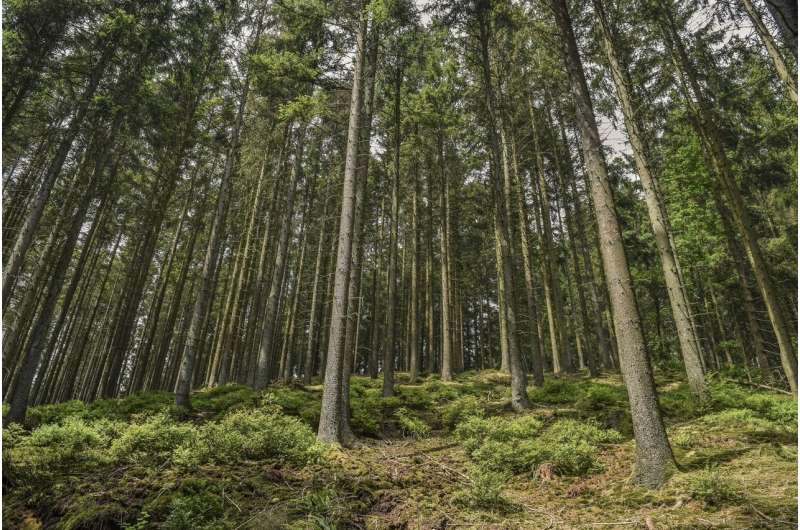New study finds black spruce trees struggling to regenerate amid more frequent arctic fires

A new study, published in the Proceedings of the National Academy of Sciences (PNAS), finds that black spruce trees—a key species on the boreal landscape for millennia—are losing their resilience and capacity to regenerate in the face of warming temperatures and increasingly frequent Arctic wildfires. A continuation of this trend could result in a landscape-wide ecological shift that would have a complex and rippling impact on the region, including an acceleration in permafrost thaw, and a loss of valuable biodiversity.
In boreal North America, the thick, spongy soils on which black spruce grows are made of peat moss and lichens that retain moisture very well but when they do dry out are highly flammable. Black spruce rely on fires for regeneration—their cones open up in the heat and drop seeds onto the charred organic soil—but this latest study indicates that more severe fires that burn deeper into these peat soils are leading to a short-circuit of the regeneration process.
In synthesizing data from more than 1500 fire-disturbed sites, researchers found that black spruce's ability to regenerate after fire dropped at 38% of sites and failed completely 18% of the time—numbers never before seen in a species evolved to thrive after fire. Significant shifts in wildfire regimes are pushing black spruce forests to a tipping point, beyond which the iconic species may lose its place as the dominant tree species in boreal North America.
"This trend is especially alarming given its potential impact on Arctic carbon storage," said Dr. Brendan Rogers, Associate Scientist at Woodwell Climate Research Center and study co-author. "In many parts of the boreal region, the mossy soil layers that promote black spruce regeneration also insulate permafrost. As fires increase and these forests dry out, however, loss of black spruce forests could accelerate permafrost thaw and trigger a warming feedback loop, pushing black spruce to its tipping point and facilitating the release of massive amounts of carbon from the permafrost into the atmosphere."
Widespread loss of black spruce also has implications for biodiversity, particularly caribou species that overwinter in the forest and feed on lichen. Both barren-ground and boreal caribou, important cultural species for northern communities, are already in decline across the continent and would suffer more losses if the ecosystem shifts away from the black spruce-lichen forests that provide food and refuge.
"Basically, as the climate warms, rising Arctic temperatures are causing black spruce forests to dry out, and the drier the system is, the more vulnerable it is to fire," said Dr. Jennifer Baltzer, Canada Research Chair in Forests and Global Change at Wilfrid Laurier University and study lead. "As climate change continues to push these systems to an ever drier state, these tipping points are more likely to be reached, with devastating impacts on the boreal biome and the rest of the world."
More information: Increasing fire and the decline of fire adapted black spruce in the boreal forest, Proceedings of the National Academy of Sciences (2021). DOI: 10.1073/pnas.2024872118.
Journal information: Proceedings of the National Academy of Sciences
Provided by Woodwell Climate Research Center



















